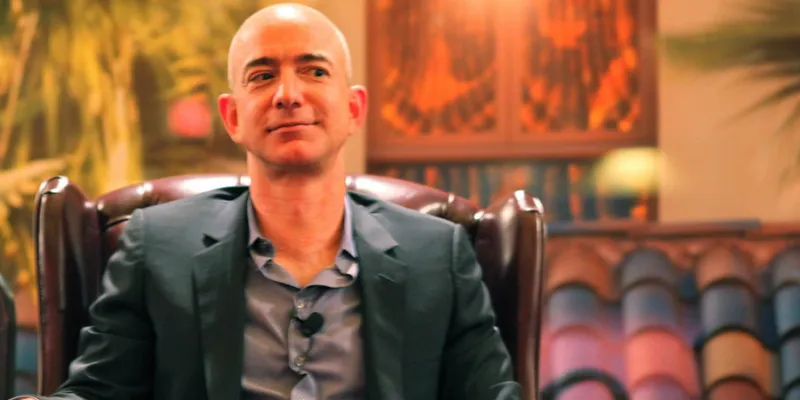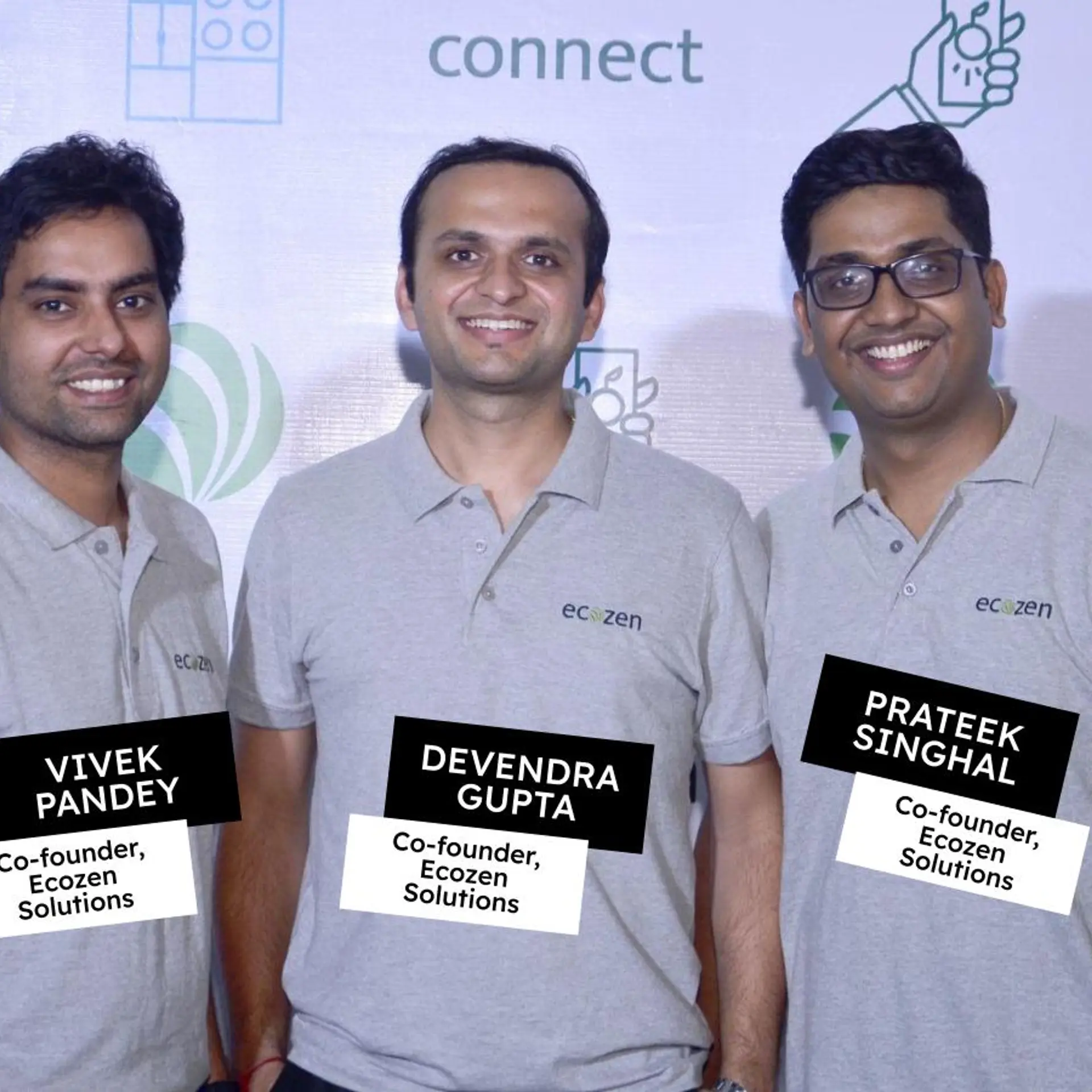After 2 decades, Bezos ensures Amazon remains at Day 1 and not slip into decline
Even as the Indian startup world rejoiced at the new-found success of its flag-bearer, Flipkart, its adversary, global behemoth Amazon, was in a reflection mode.
No, not as a consequence of how things are turning out at Flipkart. The reason was less dramatic. It was that time of the year when its Founder and CEO Jeff Bezos takes time out to measure the past, and look ahead at the future.

In his annual letter to shareholders—a ritual that he has practised since 1997—Bezos gave a peek into his thinking process and what drives him even after more than two decades since he set up Amazon from his garage in Seattle.
The letter clearly shows how he still obsesses over one thing: customer delight. Despite the 22-year-old journey from a startup to a corporation, Bezos is mindful of not letting Amazon slip into a “painful decline” or, worse, become stagnant.
“Jeff, what does Day 2 look like?” he writes as his opening line. “That’s a question I just got at our most recent all-hands meeting. I’ve been reminding people that it’s Day 1 for a couple of decades. I work in an Amazon building named Day 1, and when I moved buildings, I took the name with me. I spend time thinking about this topic.
“Day 2 is stasis. Followed by irrelevance. Followed by excruciating, painful decline. Followed by death. And that is why it is always Day 1.”
Clearly, Bezos makes it clear he will never be caught napping. He goes on to highlight some key aspects that he feels will keep Amazon relevant, and something that every business should be mindful of.
“I’m interested in the question, how do you fend off Day 2? What are the techniques and tactics? How do you keep the vitality of Day 1, even inside a large organization?”
He goes on to answer,
“Such a question can’t have a simple answer. There will be many elements, multiple paths, and many traps. I don’t know the whole answer, but I may know bits of it. Here’s a starter pack of essentials for Day 1 defense: customer obsession, a skeptical view of proxies, the eager adoption of external trends, and high-velocity decision making.”
Clear focus
Bezos says that different businesses will have different focus. It could be “competitor focused”, “product focused”, “technology focused”, or “business model focused.” But, in his view, “obsessive customer focus is by far the most protective of Day 1 vitality.”
He explains why. “There are many advantages to a customer-centric approach, but here’s the big one: customers are always beautifully, wonderfully dissatisfied, even when they report being happy and business is great. Even when they don’t yet know it, customers want something better, and your desire to delight customers will drive you to invent on their behalf. No customer ever asked Amazon to create the Prime membership program, but it sure turns out they wanted it, and I could give you many such examples.”
“Staying in Day 1 requires you to experiment patiently, accept failures, plant seeds, protect saplings, and double down when you see customer delight. A customer-obsessed culture best creates the conditions where all of that can happen.”
Don’t let process own you
Pointing out the tendency of businesses to manage proxies, he notes that it is “dangerous and very Day 2.”
“As companies get larger and more complex, there’s a tendency to manage to proxies. This comes in many shapes and sizes, and it’s dangerous, subtle, and very Day 2.
“A common example is process as proxy. Good process serves you so you can serve customers. But if you’re not watchful, the process can become the thing.
“I’m not against beta testing or surveys. But you, the product or service owner, must understand the customer, have a vision, and love the offering. Then, beta testing and research can help you find your blind spots. A remarkable customer experience starts with heart, intuition, curiosity, play, guts, taste. You won’t find any of it in a survey.”
Embrace the new
If you ever doubted that learning is a constant process, then let Bezos remind you that “the outside world can push you into Day 2 if you won’t or can’t embrace powerful trends quickly. If you fight them, you’re probably fighting the future. Embrace them and you have a tailwind.”
He states that Amazon is betting big on artificial intelligence (AI), and machine learning,
“These big trends are not that hard to spot (they get talked and written about a lot), but they can be strangely hard for large organizations to embrace. We’re in the middle of an obvious one right now: machine learning and artificial intelligence.”
He goes on to talk about how the company is investing in it.
“At Amazon, we’ve been engaged in the practical application of machine learning for many years now. Some of this work is highly visible: our autonomous Prime Air delivery drones; the Amazon Go convenience store that uses machine vision to eliminate checkout lines; and Alexa, our cloud-based AI assistant. (We still struggle to keep Echo in stock, despite our best efforts. A high-quality problem, but a problem. We’re working on it.)
"But much of what we do with machine learning happens beneath the surface. Machine learning drives our algorithms for demand forecasting, product search ranking, product and deals recommendations, merchandising placements, fraud detection, translations, and much more. Though less visible, much of the impact of machine learning will be of this type – quietly but meaningfully improving core operations.”
He notes, “We’ve also made Amazon’s higher level services available in a convenient form. Amazon Lex (what’s inside Alexa), Amazon Polly, and Amazon Rekognition remove the heavy lifting from natural language understanding, speech generation, and image analysis. They can be accessed with simple API calls – no machine learning expertise required. Watch this space. Much more to come.”
Speed does not kill
According to Bezos, “Day 2 companies make high-quality decisions, but they make high-quality decisions slowly. To keep the energy and dynamism of Day 1, you have to somehow make high-quality, high-velocity decisions. Easy for startups and very challenging for large organizations.”
He says that the senior team at Amazon is determined to keep their decision-making velocity high.
“Speed matters in business – plus a high-velocity decision making environment is more fun too."
“...most decisions should probably be made with somewhere around 70% of the information you wish you had. If you wait for 90%, in most cases, you’re probably being slow. Plus, either way, you need to be good at quickly recognizing and correcting bad decisions. If you’re good at course correcting, being wrong may be less costly than you think, whereas being slow is going to be expensive for sure.”
Bezos also encourages leaders and employees to use the phrase “disagree and commit.”
“This phrase will save a lot of time. If you have conviction on a particular direction even though there’s no consensus, it’s helpful to say, 'Look, I know we disagree on this but will you gamble with me on it? Disagree and commit?' By the time you’re at this point, no one can know the answer for sure, and you’ll probably get a quick yes."
This isn’t one way. If you’re the boss, you should do this too. I disagree and commit all the time. We recently greenlit a particular Amazon Studios original. I told the team my view: debatable whether it would be interesting enough, complicated to produce, the business terms aren’t that good, and we have lots of other opportunities. They had a completely different opinion and wanted to go ahead. I wrote back right away with ‘I disagree and commit and hope it becomes the most watched thing we’ve ever made.’ Consider how much slower this decision cycle would have been if the team had actually had to convince me rather than simply get my commitment."
...recognize true misalignment issues early and escalate them immediately. Sometimes teams have different objectives and fundamentally different views. They are not aligned. No amount of discussion, no number of meetings will resolve that deep misalignment. Without escalation, the default dispute resolution mechanism for this scenario is exhaustion. Whoever has more stamina carries the decision."
He ends by asking,
“So, have you settled only for decision quality, or are you mindful of decision velocity too? Are the world’s trends tailwinds for you? Are you falling prey to proxies, or do they serve you? And most important of all, are you delighting customers? We can have the scope and capabilities of a large company and the spirit and heart of a small one. But we have to choose it.”







